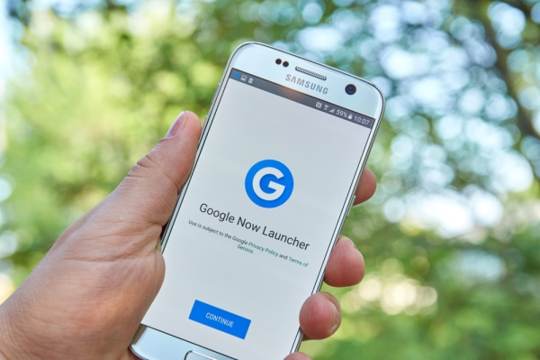Creating a great user experience (UX) is the primary goal for all product designers. And it’s all up to the designer how they wish to make the process of interacting with a product simple. According to Web Development experts, modern brands try to achieve simplicity by adopting an approach called Anticipatory Design.
What exactly is Anticipatory Design?
Anticipatory Design is the next big thing in the realm of UX. And as the name suggest, it anticipates user behavior and preferences. Basically it’s all about creating delightful user experiences by eliminating needless choices and understanding user needs.

How does it Work?
Anticipatory Design is not aimed at helping users make a certain choice, rather it is focused on creating a system where that choice is never needed –everything is programmed to work so naturally that the user doesn’t even know that a system is doing it. So, basically, anticipatory design eliminates all those steps that require user input and replaces them with action that happens automatically (based on prior user behavior and preferences)
Let’s say you receive a text message from a colleague who intends to visit you, asking you for your residence address. You read the message, and right when you are ready to type your response, the messaging application on your smartphone bubbles up a suggestion with your full address. All you need to do is to simply tap and send that message saving you the trouble of typing out your entire address.
Laura walks into a coffee shop and the cashier’s software pops up Laura’s name and her usual order. The cashier greets her and says “The usual medium cappuccino, extra hot for you today, Laura?” Laura smiles and nods, ‘Yes, Please!’
What is unique about these experiences is that they are triggered just at the right moment and with the exact information you needed at that time.
Rather than giving a lot of options/choices, an app or software that follows an anticipatory methodology will adopt a slightly different approach. All suggestions and responses are based on prior user behavior and preferences.
Why Anticipatory Designs Create Better Experiences?
Back in 1984, a French Philosopher named Guillaume Ferrero discovered the principle of least effort. According to him, the key principle in any human action is to spend the least amount of effort to accomplish or complete a task. His findings proved that we all humans prefer experiences which reduce effort even by the slightest degree.
And that’s EXACTLY what anticipatory design is based on. It is at its core focused on reducing the cognitive load.
If crafted well, anticipatory design is aimed at creating experiences that can establish a strong sense of appreciation and desirability for your product by the person using it.
What is needed to create a Good Anticipatory Design?
Two things;
- User-centered design approach,
- Focus on data processing.
In order to create a great anticipatory design, designers need to understand not only the needs of their target product users but also the obstacles they might have to face when interacting with the product. In other words, you need to strictly adopt user-centered approach when it comes to designing products.
It’s equally important to process and refine the collected data about your users as it is to conduct research and collect information about them.
What makes It so Popular Today?
Over the last few years there has been a significant progress in collecting and processing data. In fact, recent changes in technology has enabled us to process large chunks of data without any hiccups or hard work. This has all led to reshaping our perspective of how we create experiences for our users.
Secondly, design fatigue becomes a big concern in digital design and practical life. A user has to decide a lot of things throughout the course of the day. And so, when it comes to mobile apps and website, it feels great not having to rely on our ability to make effective decisions when interacting with products.
Some of the many Practical Examples of Anticipatory Designing
Embracing the Anticipatory Design methodology can really nudge your designs one-level up. Just like it can be seen in action making things work for different brands across the world:
#1 Google Now

Google Now operates as a digital assistant that is programmed to respond to a user’s requests and queries. But the app is also programmed to function intelligently by predicting user’s wants and needs based on search history and app usage. For instance, if you have added a restaurant reservation on your Google Calendar, Google Now will timely notify you about weather and traffic updates.
#2 Amazon

Believe it or not, but Amazon is the pioneer of Anticipatory Design. Amazon’s product recommendations are purely data-driven, as the platform uses information it has about its users to suggest items based on their specific purchase history. Personalized product recommendations I.e. those based on your size and color preferences are an essential feature of Amazon.
Being a giant e-commerce platform, it can be a little difficult for users to decide which products to purchase. Anticipatory design works by eliminating all irrelevant options and directing user attention towards specific products only.
#3 Netflix

Netflix is a great example that works purely based on an anticipatory design structure. Once you log-in to your account, it shows you movies-to-watch based on your search history and taste preferences.
What really makes Netflix stay ahead of its competition is its intelligent app design that changes interface in the moment you are interacting with the app.
#4 Apple Music

Anyone who is familiar to creating a playlist on Apple Music knows how time-consuming this process can be. Apple Music tries to simplify this activity by suggesting songs you are most likely to enjoy. It works intelligently by offering personalized playlist creation ‘My New Music Mix’ to all its subscribers. These playlists are designed based on user’s play history.
In fact, the app works by pulling together playlists of songs with similar elements such as rhythm, lyrics, tune, harmony, bands and melody.
Anticipatory design offers a lot of benefits to its users. In fact, PHP Web Development agency says, ‘We are witnessing the Anticipatory design hitting the traditional market in terms of flawless designs and UX with greater personalization.’
Let us know what steps you are taking to get anticipatory design work for your business?
Author: Nouman Ali Awan has hands-on experience as an SEO Expert. He has been working with SEO writing challenged clients for over five years. He provides ghostwriting, SMM and copy-writing services. His educational background in business studies and experience of working in IT companies has given him a broad base from which to approach many topics. He writes SEO articles for Hire PHP Developers a Web Design Company London















